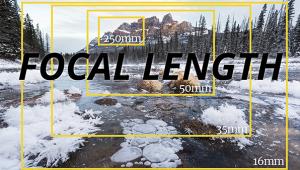Business Trends
Self Promotion On The World Wide Web
| Marketing on the World Wide Web has become a very popular subject among photographers. I am always asked about the topic when teaching my seminars and workshops. This column is a gathering of information from a survey I ran earlier this year on my own web site. We will look at the following questions: · What do you use your site for? · How do you get clients to visit your site? · How are clients responding? · What sites are good resources to check out? What Do You Use Your Site For? Your web site can work in at least three ways to gain prospective clients. One, to refer them to the site for a portfolio presentation. Two, to locate you in a search for a specific area of photography. Three, to show tests or proofs along with a hidden page given only to them. Some photographers have gone the distance to set up a consumer "retail" store on their web site to sell photo prints. For example, Deborah Sussex (www.deborahsussex.com) says, "My new online photography gallery presents a collection of color and black and white images which can be purchased as custom prints; framed and unframed. My fine art prints are purchased for personal collections or for a gift and my greeting cards are also available to view. Both can be purchased online. For clients' convenience, I now accept credit cards!" The opinions of the photographers and reps interviewed here reflect their different photo markets. For instance, Stacy Kranitz (http://stacykranitz. home.mindspring.com) is marketing to magazines and photo editors with her web site. She says, "I get lots of photo editors who are interested in the option from across the country. I would like to link to other friends who are up and coming photographers. We all have different styles and if an editor isn't attracted to my work I would hope they might hire a friend." Leslie Burns, an art/photo rep with three photo talents on her site (www.burnsautoparts.com), is marketing to advertising agency Art Directors and graphic designers. She feels, "Web sites are only good as back-ups to traditional marketing devices (direct mail, etc.). Every (without exception) Art Director, designer, potential buyer I've asked has said they will not take the time to search the net for a photographer or his/her site." How Do You Get Clients To Visit Your Site? Be sure to put your URLs on all correspondence such as ads in the phone book; press releases; business cards; letterhead; promos; sales letters; delivery memos; e-mail; purchase orders; estimates; invoices; and all final delivered images, including proofs, prints, slides, and transparencies. Where you host your web site is important. Be sure to check all the free or low cost listings you can (see section "Recommended Web Sites"). Terry Halsey (www.terryhalsey.com) says, "I tried an online source book (owned by another photographer) and received no calls. My own page seems to work much better." Art Dickinson (www.corporatephotos.com) adds, "I have signed onto several no cost sites, the most recent is portfolios.com With my stand-alone site, I submit it every month, and have a few banner ads locally. I also send out press releases several times a year." Specifically designed to promote the web site, many photographers send direct mailings to clients and potential clients; most surveyed preferred post cards. Brian Tremblay (www.tremblayphoto.com) says, "I send direct mail pieces (smaller than what I would normally print) and direct the recipient to view my online portfolio. I also have a toll free number for them to contact me if they would like to see more. I also put my web site on any and all advertising, business cards, letterhead, and fax cover sheets--anything I can. Even newspaper articles that are written about me have my web site in it. I try to put my page link on any professional forums or list servers I participate in. Also, every e-mail I send has my web site on it." Since many of the photographers I talked with complained about being invisible to the search engines, here are a few technical tips. Meta tags or keywords are very important to make yourself visible. To do this, make a list of keywords (25-50 which start with "photography") that describe your photography services; be sure to include subjects, geographic locations, and your name. Also use words that describe your style (macro), type of photography (wedding), and industry (entertainment). Then, write a short paragraph as an introduction for your homepage using some of these keywords. Next, go to the Head section of your HTML page and add a page titled Meta Tag--enter the above 25-50 keywords. This is not necessarily the same as the title at the top of your web homepage. The HTML title is for the search engines and the homepage title is for visitors. One of the least expensive and simplest ways to submit to a number of search engines is with the Submit It! web site (www.submit-it.com). This site allows for the submission of up to 20 search engines with one form. A second option is to pay a fee for the submission of up to 400 search engines and directories. After you are finished, check how your site compares to others with similar information. Go to the Rank This! web site (http://rankthis.com) and submit your URL with typical search keywords and it will tell you where you rank in the first 200 pages listed. Your objective is to be in the top 10 listings. This makes the keywords Meta Tag section of your HTML extremely important for successful web promotion. How Are Clients Responding? Here are some samples from the survey. John Sharpe (www.Sharpeshots.com) says, "I've had lots and lots of feedback that mine is beautiful but here's something to think about. The response has not been, `Hey, really nice photos and I liked your site.' It's, `Hey, beautiful site!' Is the box and wrapper speaking louder than the images inside? I need to start asking my clients what they thought of each." According to Burns, "Clients are responding very positively. They often look at the site then call with specific requests such as, `Can I see more stuff like image x?' We also use the web for client approval, concept sharing, and other visual situations." Dickinson adds, "I have two portfolios on my site. A commercial work section and a personal work section. The time I used to take to physically show a portfolio has been erased. I often get assignments on the spot; most are from an out of town Art Director. They seem assured that the work they will get from me will meet their expectations." Recommended Web Sites www.photonews.net |
- Log in or register to post comments
















































